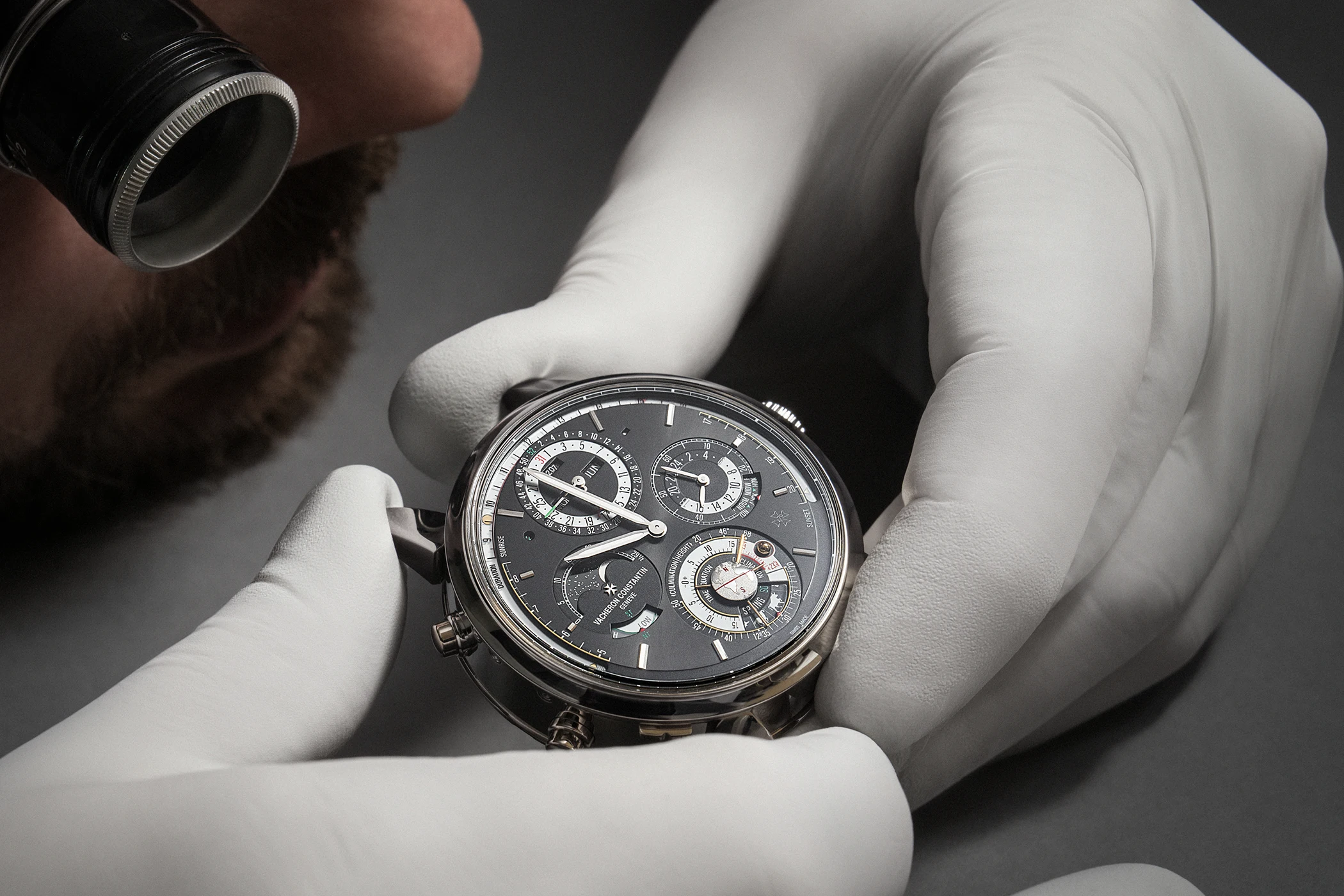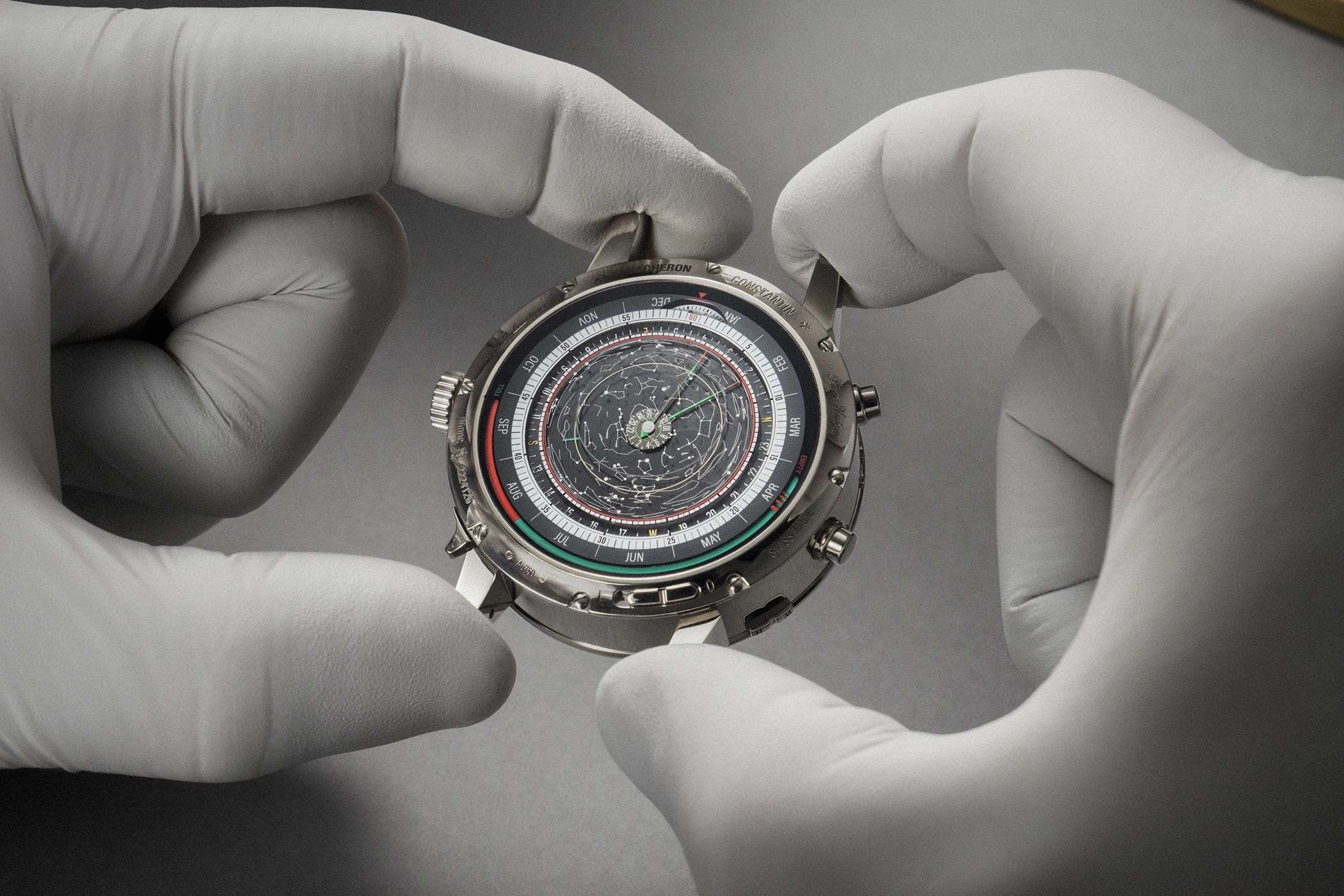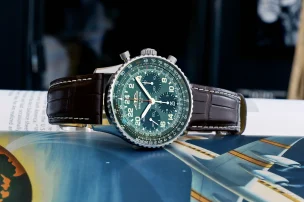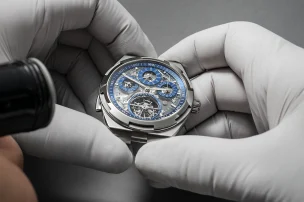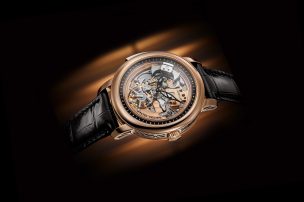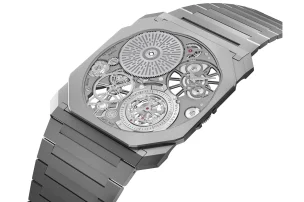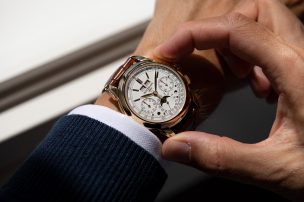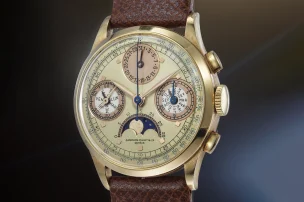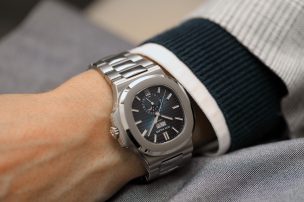
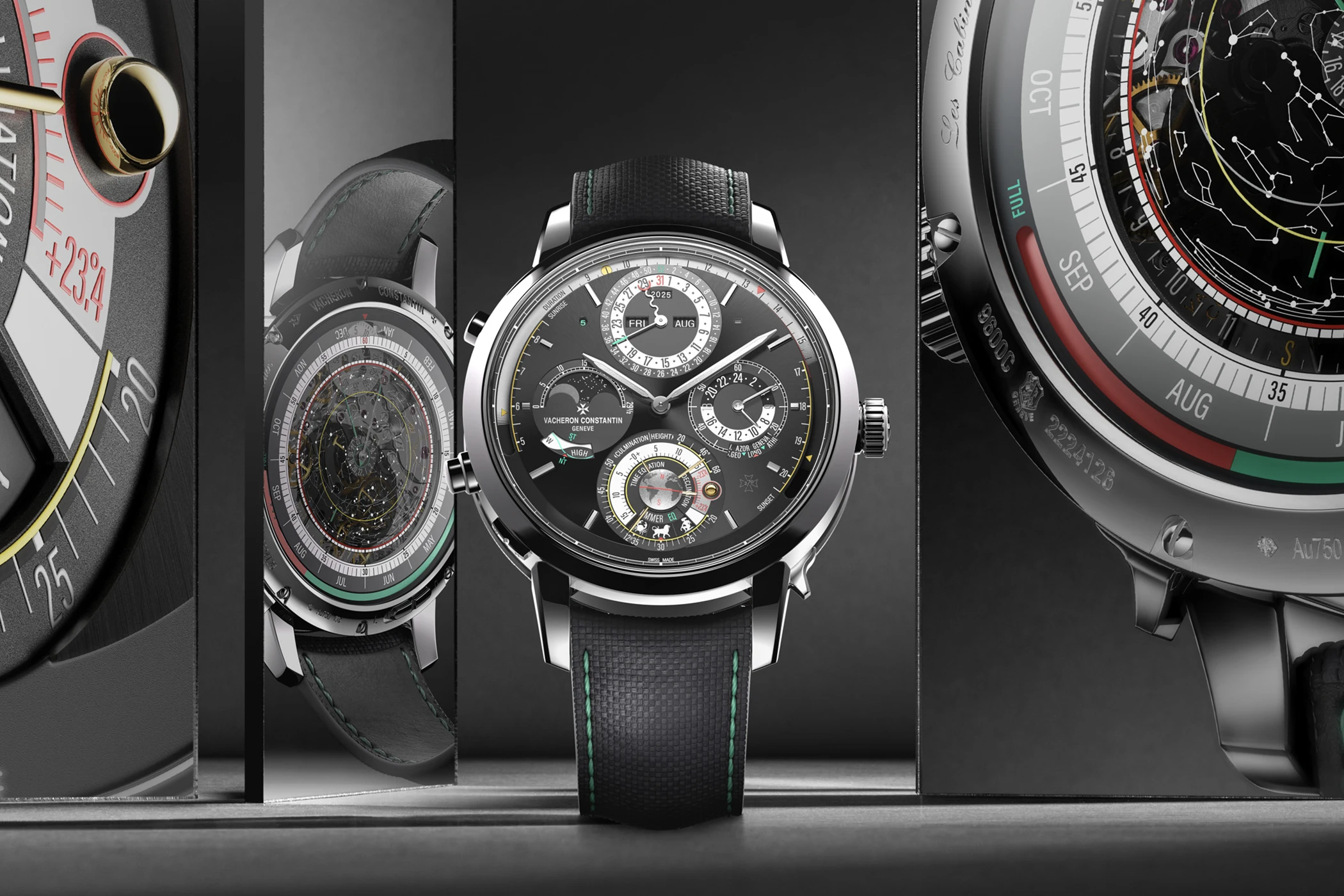
W&W 2025: Vacheron Constantin Les Cabinotiers Solaria Ultra Grande Complication – The World’s Most Complicated Wristwatch
Some anniversaries are celebrated with confetti and champagne. Others mark their place in history with an event that redefines their own work. Vacheron Constantin chose the latter for its 270th birthday: the presentation of Les Cabinotiers Solaria Ultra Grande Complication – La Première. A unique piece, a supernova of watchmaking, a new world record for the most complicated wristwatch in the world: 41 complications, 1521 components, 13 patent applications and eight years of development.
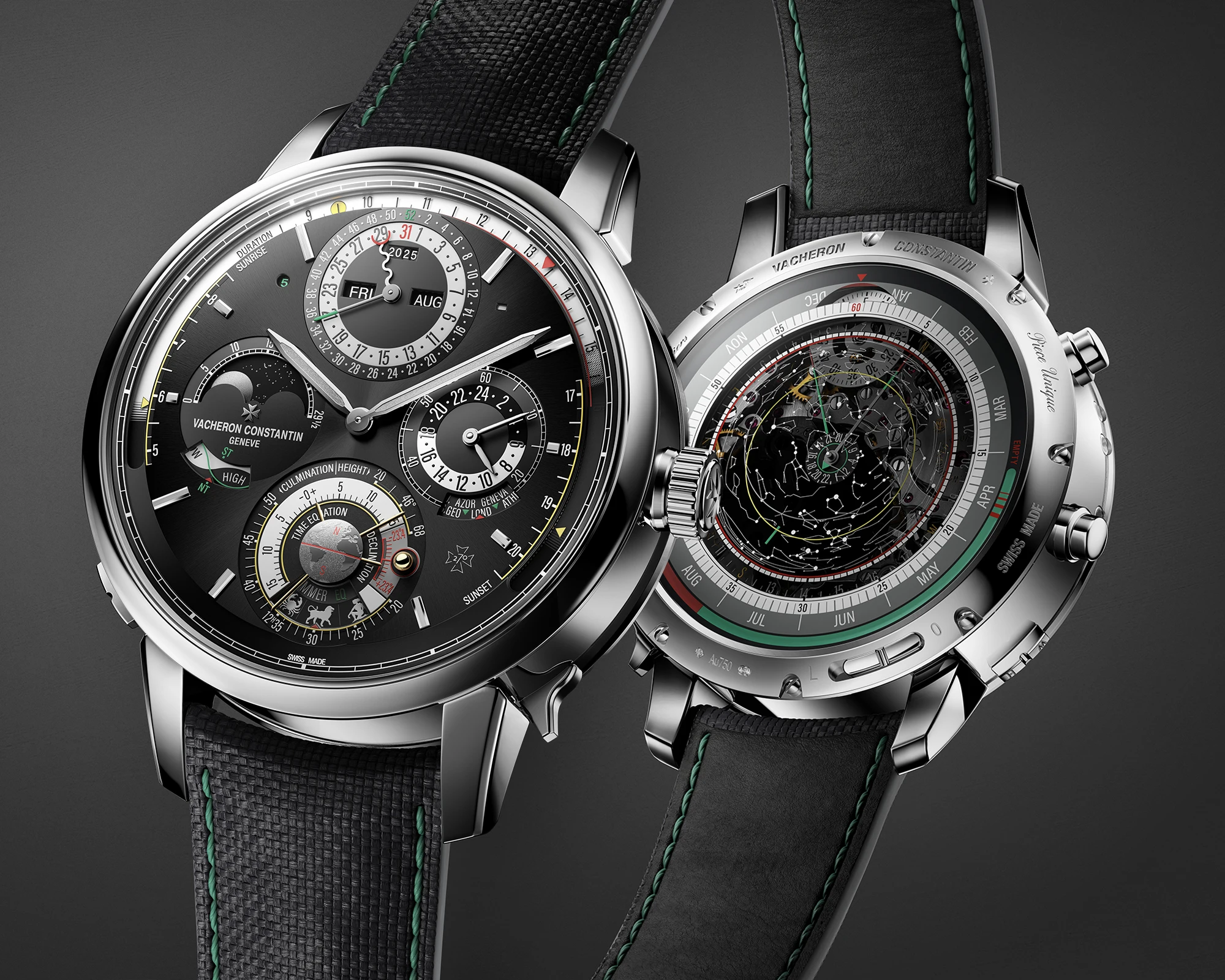
World record holder
Last year at Watches & Wonders, Vacheron Constantin presented the world’s most complicated pocket watch, beating its own record from 2015. Reference 57260 from 2015 has 57 complications – The Berkley Grand Complication from 2024 has 63. Both were commissioned by the same collector: William R. Berkley, founder and chairman of the W.R. Berkley Corporation. That is why last year’s pocket watch also bears his name.
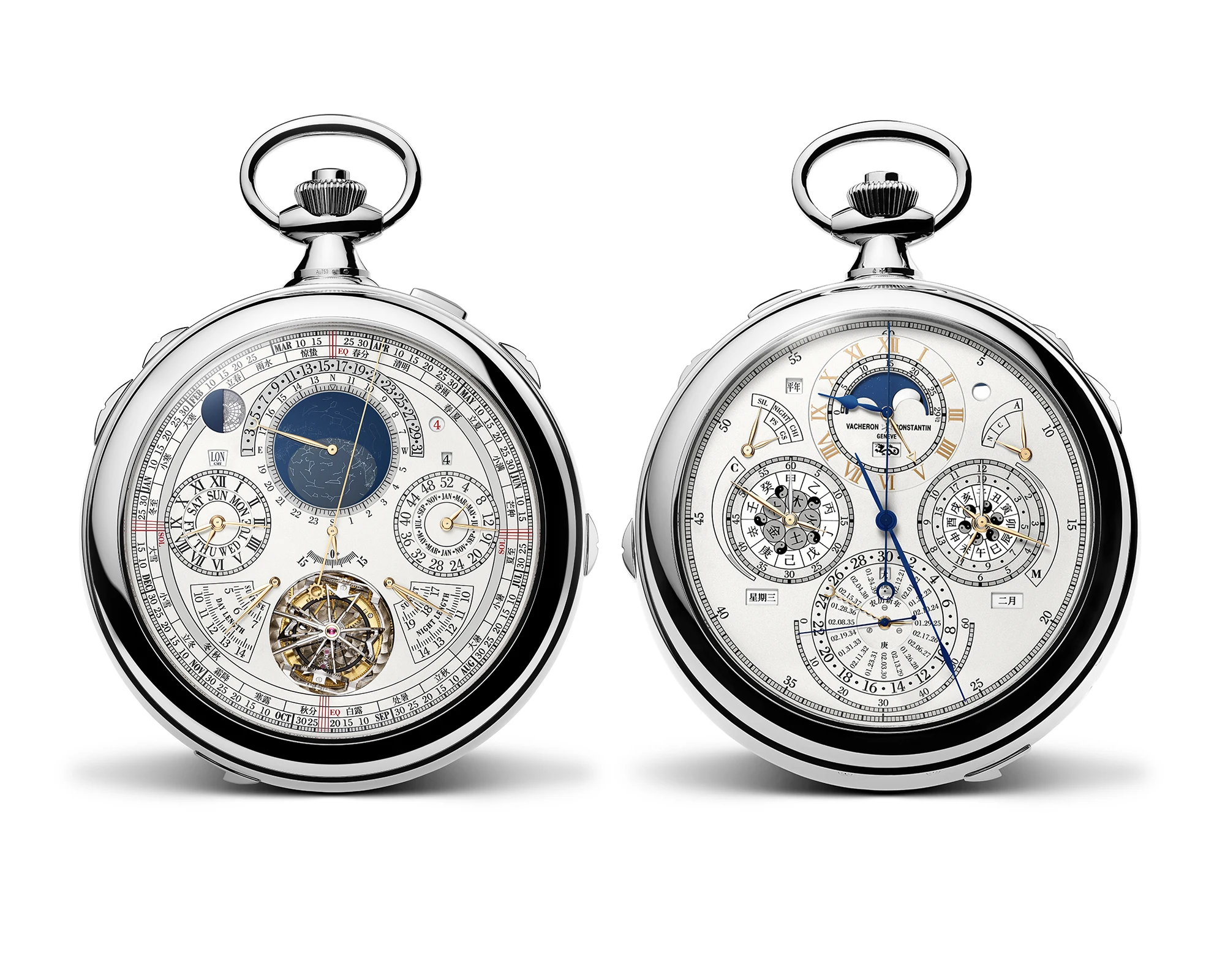
The Berkley Grand Complication from 2024
Vacheron Constantin has also repeatedly set its own records in the wristwatch sector. Its Les Cabinotiers Celestia Astronomical Grand Complication 3600 with 23 functions was the most complicated wristwatch the watchmaker had ever built in 2017. In the meantime, competitors have caught up: Patek Philippe’s Grandmaster Chime has 20 complications. The Code 11.59 Ultra-Complication Universelle RD#4 from Audemars Piguet has 23 complications. And the Franck Muller Aeternitas Mega 4 has a whopping 36 complications. But now Vacheron Constantin has not only broken its own record again, but has also launched the world’s most complicated wristwatch, the Les Cabinotiers Solaria Ultra Grande Complication.
A cosmos in 45 millimetres
The new calibre 3655 is a monument to miniaturisation. In a case made of 18-carat white gold, with a diameter of 45 millimetres and a height of just 14.99 millimetres, there are functions that have never before appeared in a single timepiece. The Solaria displays civil time, solar time and sidereal time simultaneously. It visualises the path of the sun with a precision that is closer to that of a planetarium than to that of a watch. And, it houses the Westminster minute repeater in a case that is actually much too small for it.
‘Every millimetre of the calibre 3655 was used – especially for the minute repeater with four hammers and bells,’ emphasises Christian Selmoni, Style & Heritage Director at Vacheron Constantin. ’The aim was not only technical mastery, but also a balanced, wearable watch.’
World premiere: the timing of celestial bodies
Five astronomical complications form the centrepiece of this masterpiece, including a world premiere: the timing of celestial bodies. Even the four familiar displays go beyond the ordinary. The position of the sun is indicated by a yellow dot on a rotating sapphire disc, including times for sunrise and sunset as well as the length of the day. A three-dimensional gold sphere on a counter at six o’clock indicates the declination of the sun, while a second hand marks its height above the horizon. The culmination, i.e. the sun’s highest point, can also be read – a moment that depends on the geographical position of the wearer.
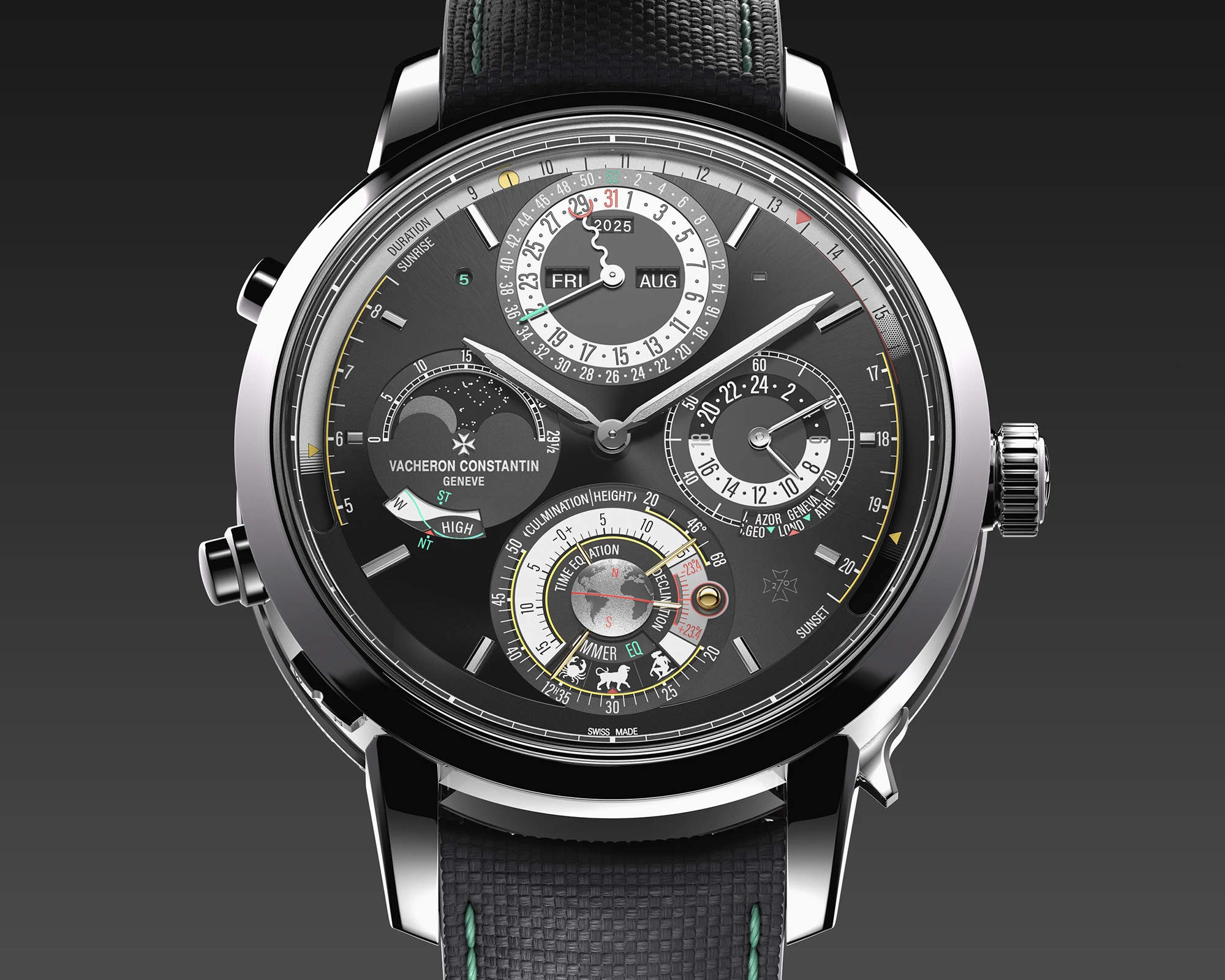
A rotating disc on the counter combines the constellations of the zodiac with the seasons. This synthesis of mechanics, astronomy and art is not only informative, but also poetic.
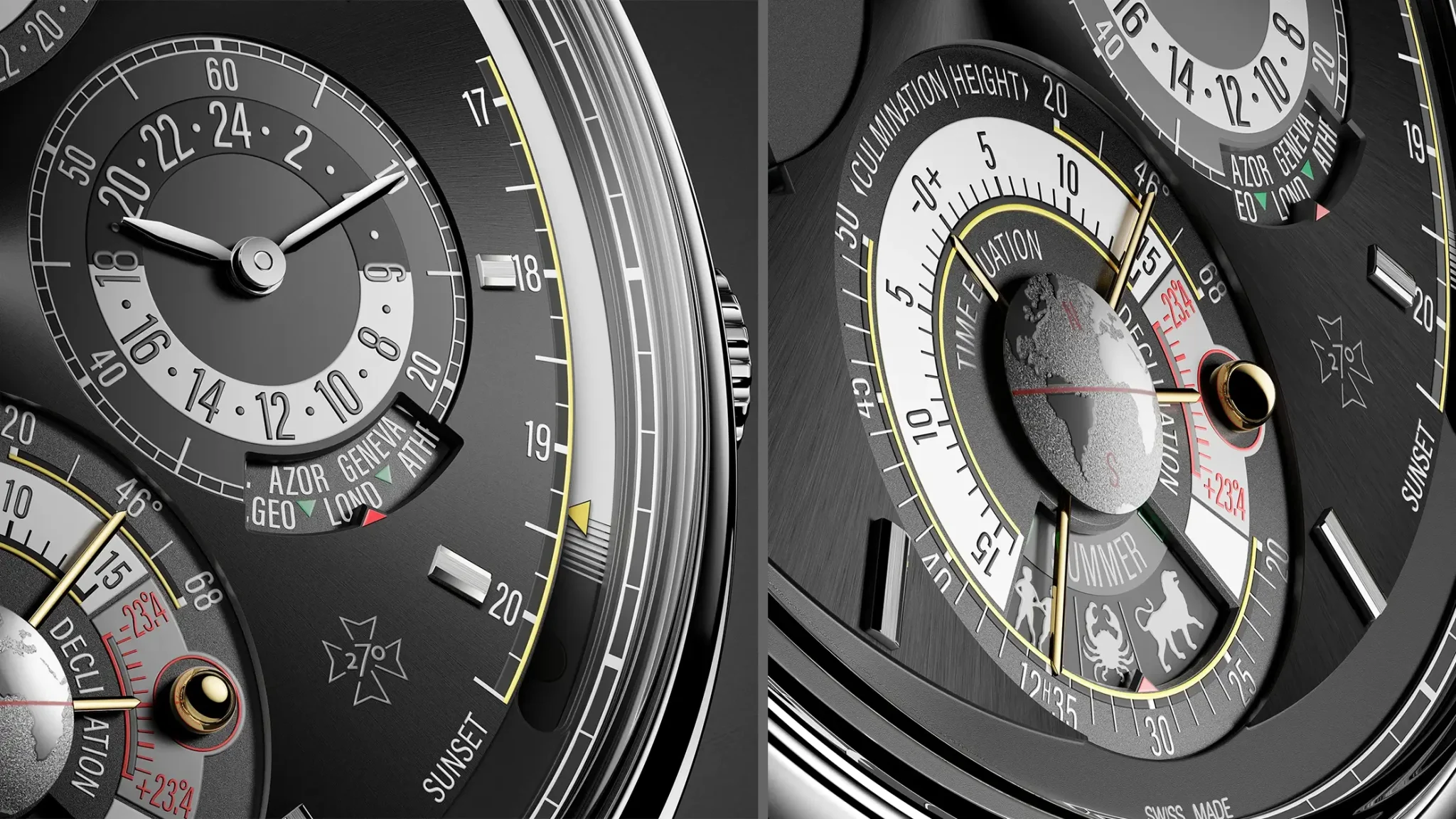
Technology written in the sky
The requirement to display three different time formats at the same time necessitated three completely separate gear trains – one for civil time, one for sidereal time and one for true solar time. The latter takes into account the elliptical orbit of the Earth and its axial tilt. The difference to mean time – known as the equation of time – fluctuates over the course of the year between -16 and +14 minutes and is displayed at six o’clock.
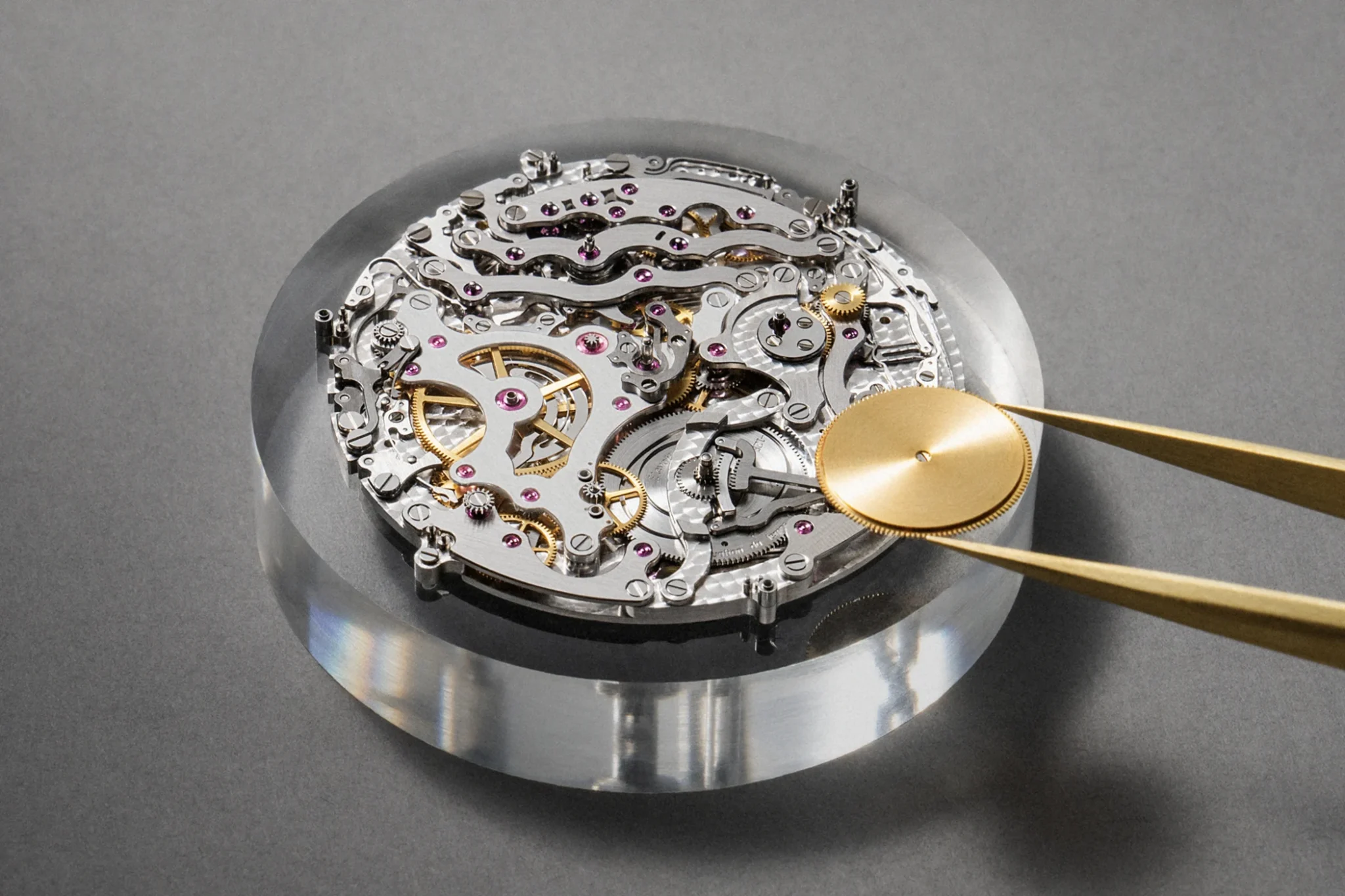
Calibre 3655
But the Solaria is a genuine horological marvel even beyond its astronomical functions. The perpetual calendar combines the day of the week, month, leap year, calendar week and even the four-digit year on a single counter at twelve o’clock. The moon phases are astronomically correct – with a deviation of only one day every 122 years. A mareoscope indicates spring tides and neap tides, the rhythmic fluctuations of the tides that are influenced by the position of the moon.
Westminster chime
Another centrepiece is the chime: the Westminster minute repeater sounds the hours, quarters and minutes via four hammers and four bells – an architecture that not only guarantees the highest sound quality but also resulted in seven patent applications. The hammers, some made of steel and some gold-plated, were shaped to maximise the energy they transmit. The bells are firmly attached to the case, which significantly improves resonance and volume.
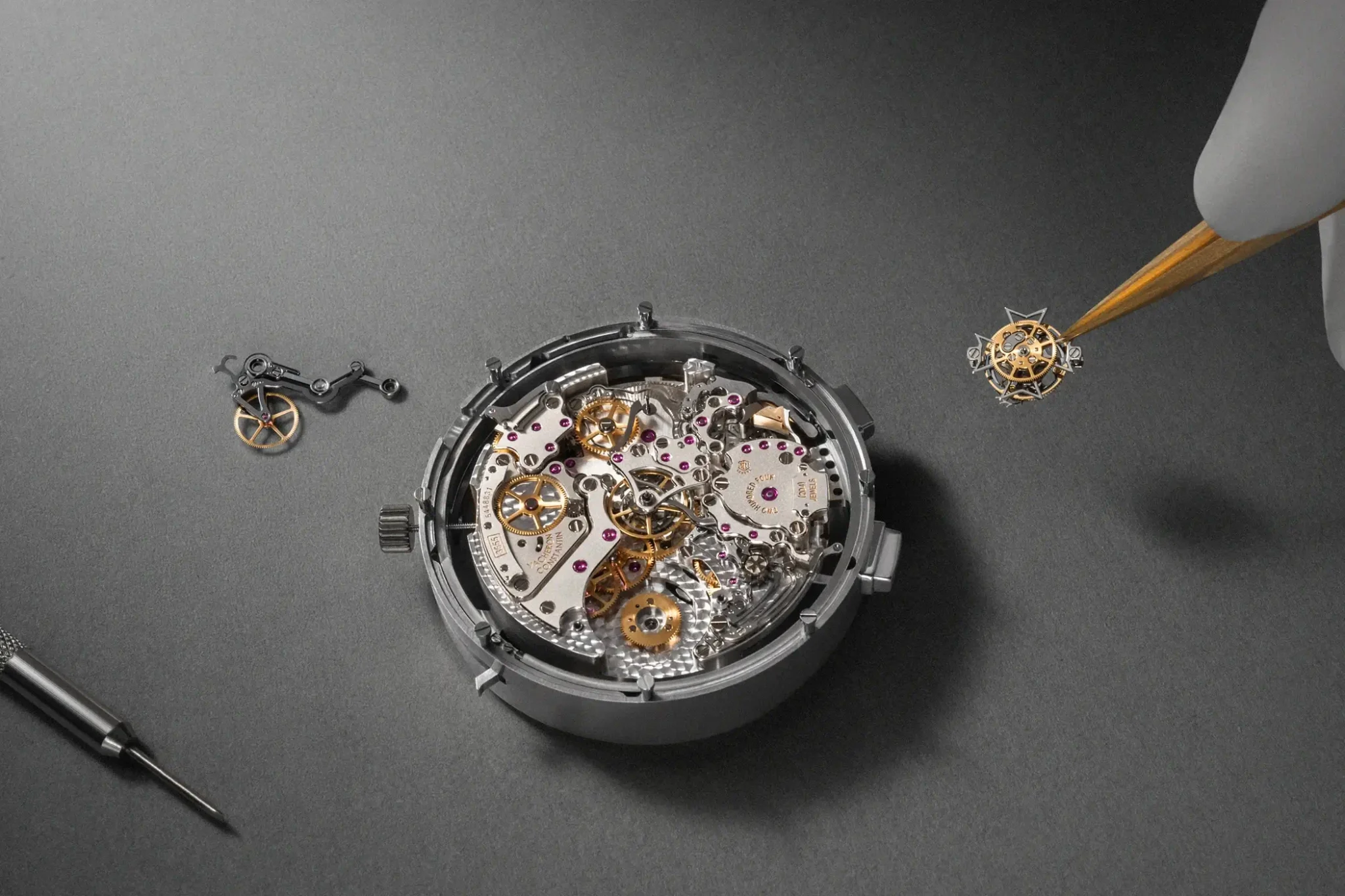
‘For us, it was not just about the complexity of the movement,’ says Selmoni. ’It was about every element, every note, every display having the greatest emotional impact.’
An innovation also allows the wearer to choose between a classic mode (hours, quarters, minutes) and a simplified hour repeater – depending on their preference and the occasion.
A chronograph for the stars
One of the most spectacular innovations is hidden on the back. Not only is the star time display located here, but also a highly developed split-seconds chronograph. In combination with a rotating sky chart, it enables a new feature: the precise determination of the moment when a selected star enters the field of view.
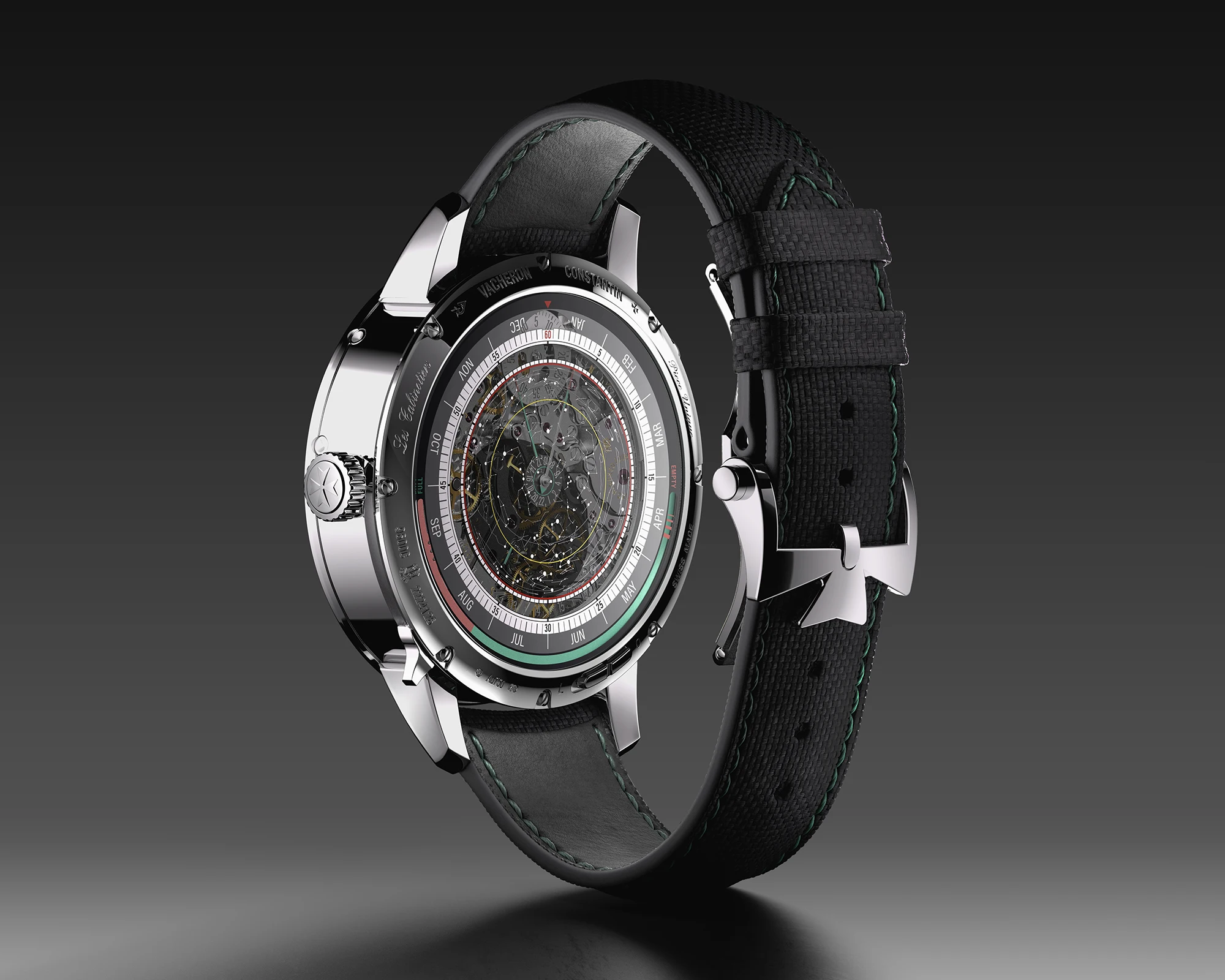
The chronograph is started at the push of a button, with the first hand stopping at a fixed reference point and the second reaching the selected star. The remaining time until visibility is indicated by a green triangle.
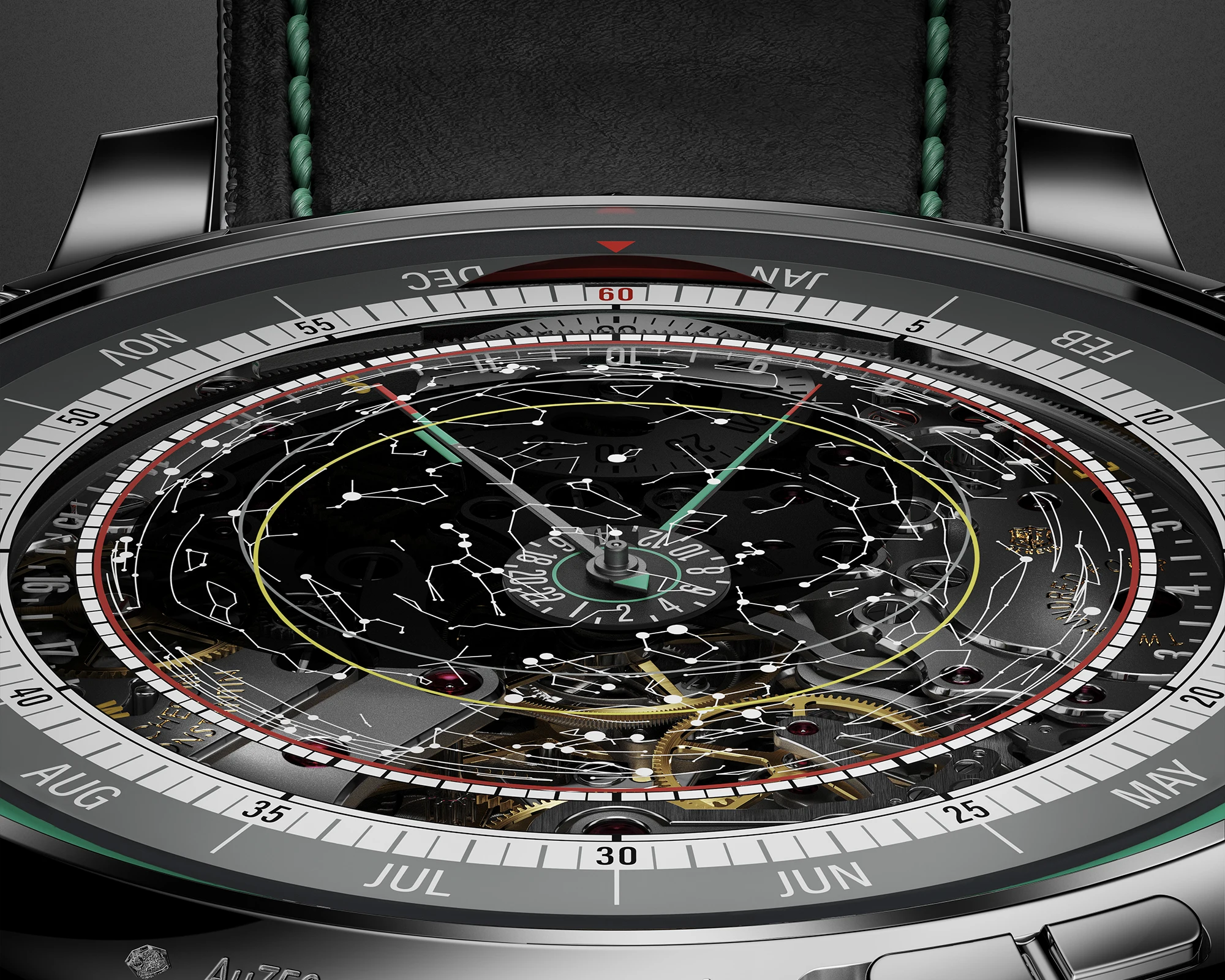
Nine different finishing techniques
The variety of finishes gives the movement an almost sculptural look. The hammers of the minute repeater shine with their elaborate polishing, while the bridges between the anglage and satin-finished surfaces shimmer. Even the tiniest screws and gear wheels bear decorations that are only visible under a magnifying glass – and yet they decisively shape the overall appearance.
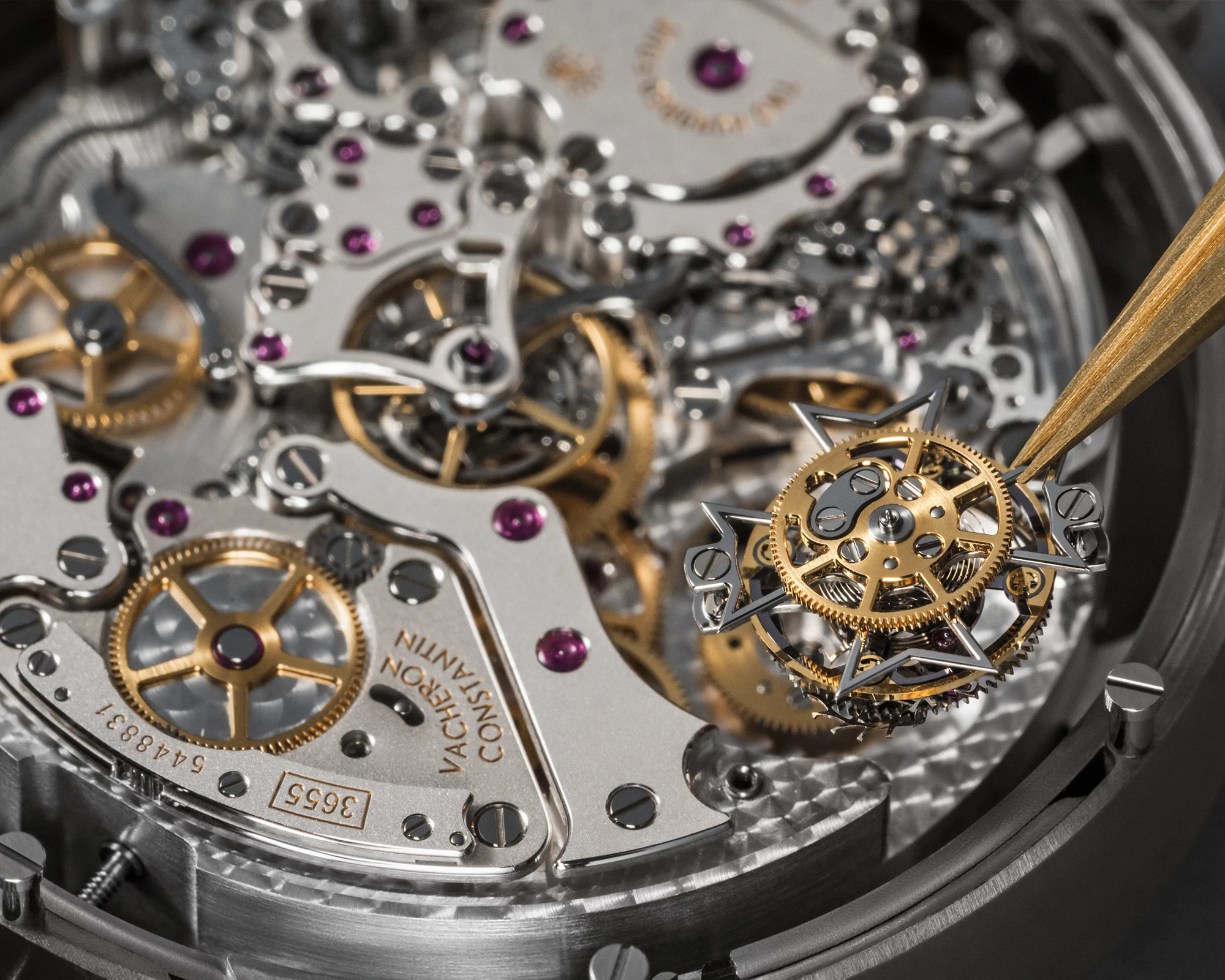
‘This watch demands dedication – in its construction and decoration,’ says Selmoni. ’The finishing is not an aesthetic bonus, it is an expression of our philosophy.’
Watchmaker, architect, designer and visionary all rolled into one
Perhaps the most extraordinary fact is that this watch was not developed by a team of specialists, but by a single watchmaker. For eight years, he designed the movement, created the case, and chose the surface finish – thus completing a project that would usually involve dozens of people.
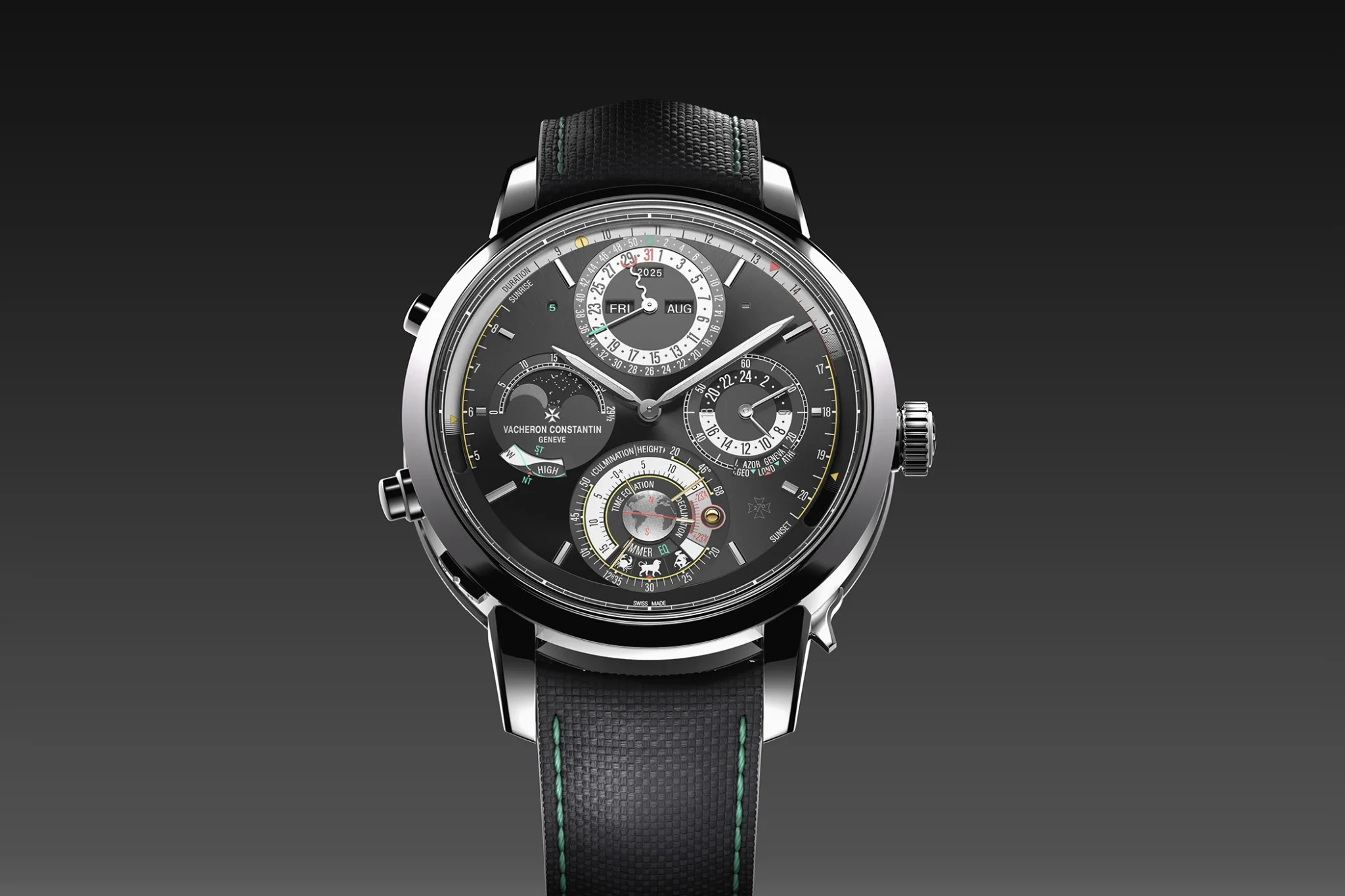
‘In contrast to other large-scale projects at our company, which took three watchmakers eight years to complete, the Solaria was the brainchild of a single individual,’ explains Selmoni. ’He was not only a watchmaker, but also an architect, designer and visionary, all in one.’
The result is more than just a watch. It is a philosophy. An attitude. A manifestation of the sentence coined by François Constantin in 1819 that still guides the Maison today: ‘Always do better if possible, and that is always possible.’
It is not yet known whether the new Les Cabinotiers Solaria Ultra Grande Complication was also commissioned by William R. Berkley, but it is quite possible.
